Minneapolis Police Brutality Against Journalists During Floyd Protests
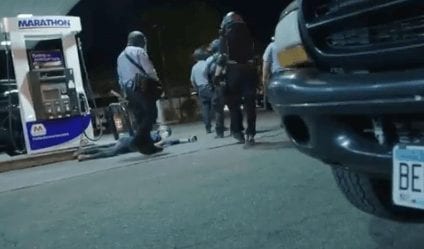
Journalist Michael Anthony Adams lays on ground, holding press badge when Minneapolis police walk by and pepper spray him. (Source)
June 5, 2020 ~ By Shari Rose
Police brutality against journalists and protesters in Minneapolis during protests for George Floyd’s killing is well-documented & unrelenting
In the wake of protests sparked by the killing of George Floyd in Minneapolis by Derek Chauvin and aided by three other officers, an onslaught of recorded incidents showing police attack journalists and protesters has exploded across the U.S. Police brutality against journalists in America is a recent and dangerous occurrence, no doubt encouraged through “enemy of the people” rhetoric espoused from the presidency over the last three years or so. Video after video displays police brutality in full force, against peaceful protesters and journalists alike, in Minneapolis, MN, and all throughout the country.
In democracies, journalists have protections against oppressive systems that seek to limit the flow of information. The press exists to tell its citizens what their country is doing. However, city and state police, as well quasi-military forces that began appearing at the end of May 2020, have gassed, beaten, arrested, and otherwise targeted journalists for telling the public exactly what the authorities are up to.
If police can assault, arrest, intimidate, and beat journalists, knowing full well they are being filmed, then it should be pretty clear how they act when they believe when no one is watching.
A current list of police attacks on journalists in Minneapolis, and their details (updated every few days):
- May 29
- May 30
- May 31
- June 2
May 29, 2020
Omar Jimenez, Bill Krikos, Leonel Mendez – CNN

Journalist Omar Jimenez from CNN reports on police activity in Minneapolis on May 29. (Source)
On the morning of May 29, Omar Jimenez and members of his CNN crew, Bill Krikos and Leonel Mendez, were capturing footage of Minnesota state police who had gathered together near a precinct burned the night before in Minneapolis. When a young protester ran into the otherwise-abandoned street, a dozen cops from that group in riot gear descended upon her.
While speaking into the camera and holding a microphone, Jimenez described the unfolding arrest when five or so police officers then approached him. He says to the men, “We can move back to where you’d like.” Jimenez repeats himself, but it’s not clear if the officers respond to him. Calmly, Jimenez continues to attempt to diffuse the tension by explaining that the four people standing behind the camera are professionals who are part of his CNN broadcast team.
Jimenez continues to try and communicate with Minneapolis police: “Put us back where you want us. We are getting out of your way. Just let us know. Wherever you want us, we will go. We were just getting out of your way when you were advancing through the intersection. Just let us know, and we got you.”

Minnesota police grab and arrest CNN’s Omar Jimenez as he holds a microphone and press badge in full view of authorities. (Source)
The camera pans to face Jimenez directly, and it shows him holding a press badge in one hand and a microphone in the other, with one cop holding onto his left arm. Jimenez stays cool, explaining to the live audience that this is “part of the advanced police presence” and continues to report on the situation.
Then, one officer says something to him, and Jimenez says, “Okay, can you tell me why I’m under arrest?” The cop doesn’t respond, so Jimenez asks again. Still no answer, and he is placed into cuffs. Viewers can hear members of the CNN team explaining from behind the camera that they’re journalists and are allowed to provide coverage of what police are doing.
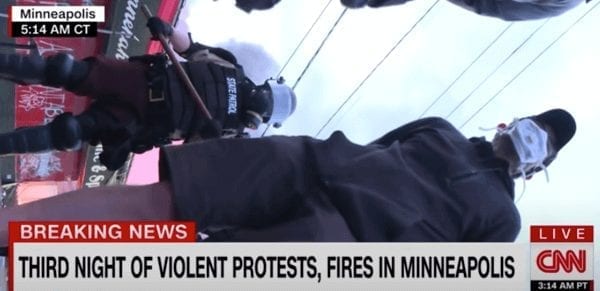
Live video is taken from the ground as CNN’s Bill Krikos and Leonel Mendez are arrested by Minneapolis police. (Source)
Exasperated, one team member on the scene speaks with disbelief in his voice as Jimenez was taken away: “Omar was just arrested. I believe we’re all about to be arrested.” Producer Bill Krikos and photojournalist Leonel Mendez are then shown in handcuffs and taken away by Minnesota state police, the camera now on the ground.
All three journalists were released an hour later.
Linda Tirado – Freelance photographer

Photojournalist Linda Tirado posts a photo of her injuries after Minneapolis police shooting her left eye with a rubber bullet. (Source)
While covering protests in Minneapolis on May 29, freelance photographer Linda Tirado was hit in the left eye with a rubber bullet from police. She had just begun to line up a shot with her camera when she says, “I felt my face explode. My goggles came off and my face was suddenly burning and leaking liquid, the {tear} gas mixing with the blood.”
Protesters came to her aid and pulled her to safety, away from the onslaught of tear gas and rubber bullets. Tirado was rushed into surgery, but ultimately lost her eye. She remains vocal on social media, continuing to work to bring more evidence of police brutality against journalists and protesters alike to light across the U.S.
May 30, 2020
Ali Velshi – MSNBC
Ali Velshi and his MSNBC television crew were walking with protesters near the 5th precinct on May 30 when Minneapolis police forces wearing gas masks pulled into the group. Velshi said that “nobody was doing anything” when they started shooting tear gas into the crowd.
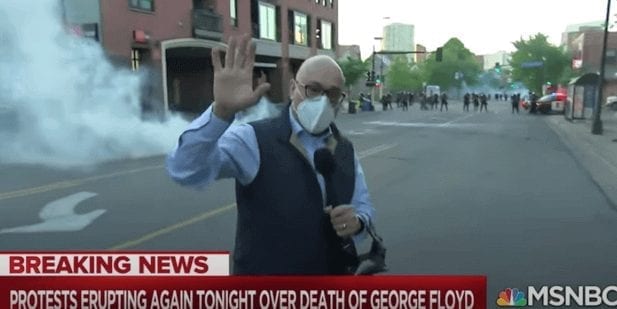
Journalist Ali Velshi reports on Minneapolis police activity during George Floyd protests on May 30. (Source)
Live on television, Minneapolis police then begin firing tear gas directly at Velshi and the MSNBC crew. They all back up as police move toward them. Velshi continues speaking, narrating what is unfolding while he and his team continue to follow orders and walk backwards:
“There has been no provocation. There was nothing that happened whatsoever. The police pulled into this intersection, unprovoked, right into the middle of the crowd. They split the crowd, and started firing in both directions. They now have fired at us.”
Minneapolis police then fire more tear gas at journalists and protesters. At this point, the MSNBC host took over speaking for a while to allow Velshi and his crew to focus on the scene and stay safe. They cut back to him two minutes later, now out of breath and his glasses off.
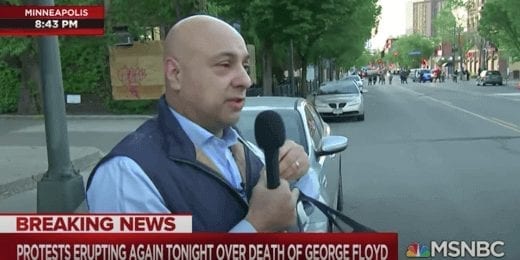
Velshi comes back on air and speaks with MSNBC host after being tear gassed by Minneapolis police. (Source)
Coming back on the air, Velshi said: “We got hit unfortunately with tear gas without our masks on because it was that fast … there was no warning whatsoever. They literally pulled into the station, jumped out of their car, and they just came in and started shooting.”
Velshi explains he and his TV crew were nowhere near the front of the crowd, as is their security protocol. He estimated that they were in the last third of the group, but police intercepted the protesters and broke them into two crowds. This action put numerous protesters and journalists immediately in harm’s way. The police at that point started tear gassing the crowds, firing off flashbangs, and shooting other projectiles.
He says that he would “put {his} career on this” that there was nothing at any point in the protest that warranted police attacks on the protesters.
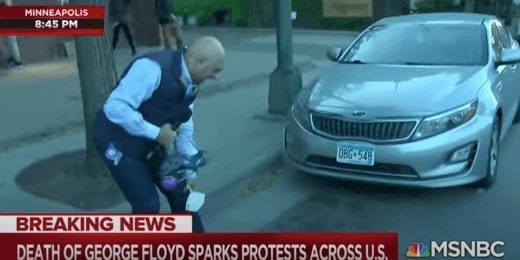
Ali Velshi is hit by rubber bullet from Minneapolis police while live on air. (Source)
Suddenly, again, Minneapolis police fired upon the crowd without warning. Velshi, still live on the air, then exclaims and says, “I got hit. I got hit, hold on.”
He was shot with a rubber bullet. The video ends a moment or so after. Velshi and his crew were able to escape the police attack with minor injuries.
More stories: The Lives of Ferguson & Black Lives Matter Activists Cut Too Short
More stories: El Negro Matapacos & the Riot Dogs Who Protect Protesters
Tom Aviles – WCCO-TV
On May 30, Tom Aviles was capturing video of George Floyd protests in south Minneapolis when police began firing rubber bullets into the crowd. Aviles was hit, and he took shelter in an alley. In addition to wearing a press badge, he carried a large television camera over his shoulder.
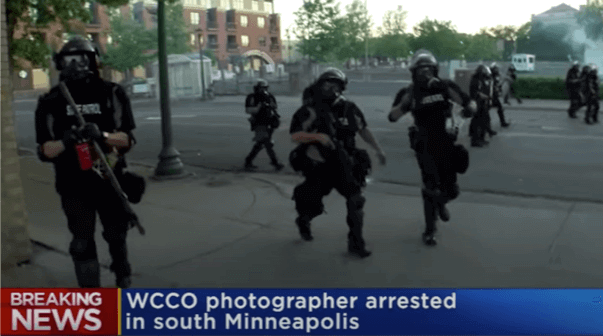
WCCO journalist Tom Aviles takes video as Minneapolis police turn from the street to arrest him while covering George Floyd protests. (Source)
As police continued their advance down the street, some spotted the journalist and turned into the alley to confront him. A cop yelled at him to “Get gone!” Aviles asked where he should go, and identified himself as a member of the press with WCCO.
Officers then shoot his parked car a few yards away and yell “You’re under f*****g arrest!” Aviles complies and walks in the direction police want him to go. He yells for his producer, Joan Gilbertson, to come over and help diffuse the situation. He tells Minneapolis police that Gilbertson is his producer. An officer then grabs Aviles and forces him on the ground to arrest him. Aviles is heard saying “Okay, okay, okay, I’m not fighting, I’m not fighting.” The video, all taken from his vantage point, then ends.
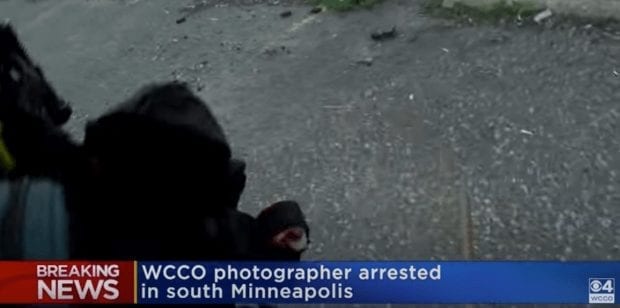
WCCO reporter Tom Aviles puts down the television camera as he is arrested by Minneapolis police on May 30. (Source)
When speaking to WCCO after the arrest, Gilbertson says that when she approached officers, they told her “You’ve been warned, or the same thing will happen to you. Or you’re next.” Gilbertson said she had her hands up and pleaded with cops, “Don’t shoot me, don’t shoot me.”
Aviles was later released from police custody.
Stefan Simons – Deutsche Welle (DW)
During a march of more than 5,000 protesters on Interstate 35 highway in Minneapolis, a semi-truck drove through the crowd on May 31. Thankfully, no one was killed, and it appears protesters were able to get out of the way before being hit.
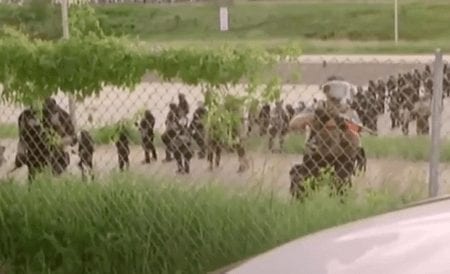
Minnesota state trooper points rifle at television reporter, Stefan Simons, live on air as he identifies himself as press. (Source)
After police had cleared the area of protesters, DW reporter Stefan Simons, and his crew, attempted to report on the attack. Police ordered them to leave. When he and his team got into their car to drive away, police shot projectiles at them, likely rubber bullets.
Simons left the area and came up to a hillside that overlooked the highway. A chain link fence separated his team and police. Reporting live on television, Simons began to talk about the vehicle attack against protesters. He was wearing a helmet, mask, and press vest, and was carrying a large camera.
As police approach the team, he attempts to speak to the officers. They then immediately shoot at him with a rubber bullet through the fence. Still on the air, Simons says, “We’re all press here, okay?” An officer aims his weapon at him and says, “Drive away.”
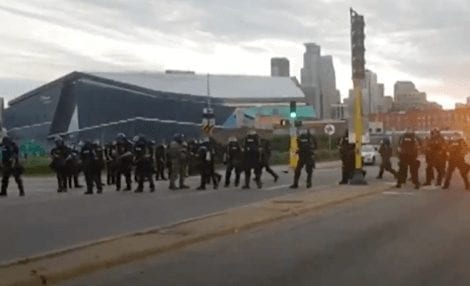
Minneapolis state troopers shoot rubber bullets at car carrying DW journalists as they drive away. (Source)
Simons responds: “We have permission to be here, stop it.” The officer responds by saying that he is giving the press a lawful order. Simons counters immediately with: “Sir, the governor of Minnesota exempts press.”
The video cuts at that time, but it then shows Simons and his team driving away from the scene.
Ryan Faircloth – Star Tribune
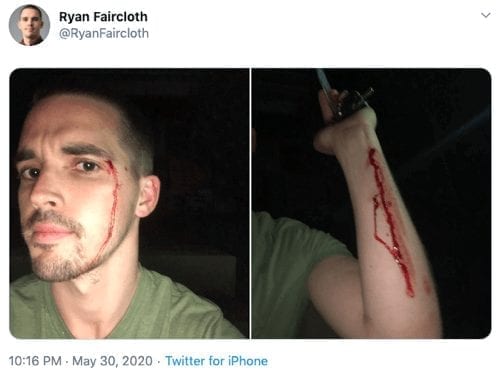
Star Tribune’s Ryan Faircloth posts photos of his injuries after Minneapolis police shot up his car. (Source)
Minneapolis police fired upon journalist Ryan Faircloth’s car two separate times on May 30. While driving down a major thoroughfare of the city, East Lake Street, Faircloth made a wrong turn on a street that police had blocked off near the end. Before Faircloth had a chance to reverse, and with no warning, police shot rubber bullets at his vehicle, causing some damage. Fellow reporter, Chao Xiong, was also in the car.
Later in the evening, cops again shot at Faircloth’s car, this time as he was driving past police. One of the windows shattered, and shards of glass cut his face and arms. After the attack, a reporter with FiveThirtyEight, Maggie Koerth, found Faircloth bleeding and took video as he spoke about what Minneapolis police had done that night.

Faircloth speaks about Minn. police shooting his vehicle on May 30. (Source)
Faircloth said: “Cops just shot my window out, my passenger-side window. The glass shattered as I quickly tried to turn and get out their way … I was just trying to get out of the area.”
Andrew Kimmel – AuraNexus
After covering a day of protests on May 30, video producer Andrew Kimmel returned to his rental car in a Kmart parking lot to find that every tire had been slashed. In a video he took at the scene, the dozen or so cars still in the lot had their tires slashed as well.

Kimmel’s video shows all four tires of his car slashed, along with all other cars in the parking lot. Minneapolis police were filmed slashing the tires of parked cars. (Source)
Kimmel said that he knew police had damaged these cars because Minnesota law enforcement officials had been in control of the area since the protest started:
“For those asking how I know it was the police… police overtook this entire area shortly after the protest began. No protester would’ve been able to get in here after that. I got stopped by National Guard and was able to get through with my press badge.”
Police initially denied any involvement for more than a week, but Minnesota state troopers finally confirmed they had slashed all those vehicles’ tires on June 8. Law enforcement then defended the actions, saying officers slashed tires in the Kmart parking lot to prevent “vehicles from being used in attacks.”
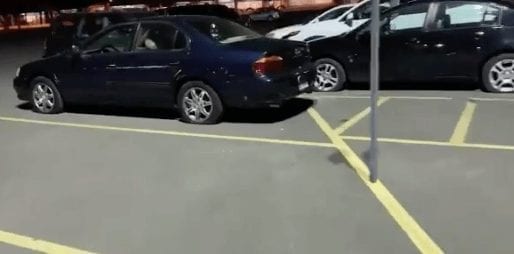
Video shows other cars in the Kmart parking lot with slashed tires on May 30. (Source)
Luke Mogelson – The New Yorker

Minnesota state troopers slash the tires of journalist Luke Mogelson’s rental car on May 30. (Source)
On May 31, New Yorker writer Luke Mogelson spent the day covering protests sparked by the killing of George Floyd. After police had tear gassed protesters, Mogelson left the area and went back to check on his car. He used his press pass to move through the lines of officers seeking to stop him, though he said one officer took a photo of his press pass so that “everyone knew that car belonged to the press.”
When Mogelson returned to his car later in the night to drive home, police told him that his vehicle’s tires had been slashed. He said the officers “had grins on their faces” and were laughing as he assessed the damage they had done to his car. Video shows Minnesota state troopers slashing parked cars, including a silver sedan that belonged to Mogelson. Police would continue to deny they had any involvement in the car damages for another week, before finally coming clean on June 8.
Morgan Chesky – NBC
Morgan Chesky was stationed with his TV crew, covering police activity as they used tear gas to disperse a large crowd of protesters on May 30. Wearing a gas mask, Chesky explained how police use these tactics to retake the streets little by little, as large clouds of tear gas wafted across the intersection.
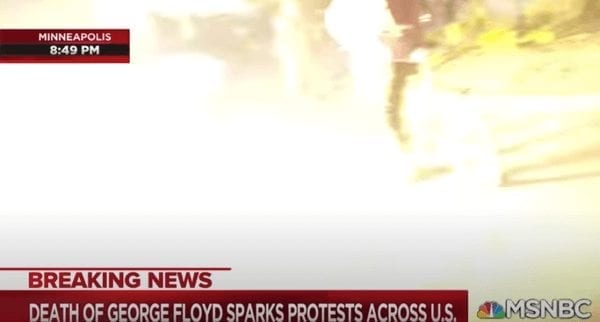
Flashbangs go off near protesters and journalists as they run from Minneapolis police. (Source)
To keep their distance from police, Chesky and his crew moved out of the street and onto the sidewalk. He continued to explain the scene live on the air, complying with orders from police to move out of the area. He put his hands in the air and said “We’re moving back, we’re moving back. We’re going to give them all the space they need right now.”
He continued to follow police orders when a flash bang went off nearby. The police quickened their pace and closed the distance between themselves and Chesky, other journalists and some protesters, who continued to follow orders. Police then shot flash bangs directly into the crowd at point-blank range. It exploded on camera, right next to Chesky and other members of the press. Chesky and his crew ran, eventually making it to safety.
Michael George – CBS

Minneapolis police shoot rubber bullets at CBS press, despite any protesters nor signs of violence in sight, on May 30. (Source)
Michael George and his team at CBS had stationed themselves away from the crowds of protesters and police, setting up in an empty parking lot. Minneapolis police were grouped together near one edge of the parking lot, George and his team had multiple cameras set up to record footage of police in riot gear preparing to go after protesters.
Without provocation or warning, the police aimed and shot rubber bullets at the journalists, striking the sound engineer. The video then cuts out as they are forced to run from the barrage of “less-lethal” projectiles being shot by Minneapolis police.
Zach Roberts – Freelance journalist

Journalist Zach Roberts tweets photo of himself after being pepper sprayed by Minneapolis police. (Source)
At the Lake Street/Midtown LRT Station in Minneapolis, freelance journalist Zach Roberts was covering peaceful protests when police began shooting pepper spray and rubber bullets into the crowd. Roberts says he watched a rubber bullet hit one woman in the chest and a man in the hip.
He then was pepper sprayed in the face, and lost sight for a few minutes. Roberts says some protesters then grabbed him, shielded him from rubber bullets, and got him to safety.
May 31, 2020
Michael Anthony Adams – VICE News
While covering protests and police actions in Minneapolis on May 31, Michael Anthony Adams and other reporters took shelter from tear gas and rubber bullets at a gas station parking lot. One cop kept a rifle pointed at them for an extended time, despite their press badges in full view, clearly attempting to intimidate them.
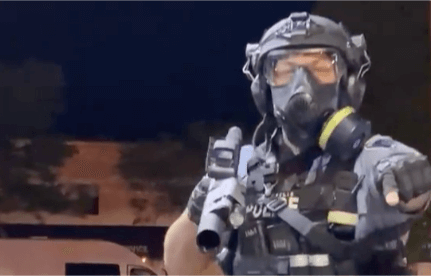
Video from journo Michael Adams’ point of view as Minnesota police officer, fewer than 3 or 4 feet away, points a weapon at his head. (Source)
Suddenly, Minneapolis police and state troopers surround the gas station. Adams repeatedly identifies himself as press, gets on his knees and puts his hands up as police approach, his press badge around his neck. A cop then throws him to the ground.
Adams lays still for about 15 seconds while police officers walk around him. He lifts his press badge above his head and holds it there. Then, with no warning or provocation, an officer walks past Adams and pepper-sprays him directly in the face. Adams tries not to move or make any sound while choking and laying on the ground. About 30 seconds later, the police let him go. The full assault is caught on multiple videos. In fact, Adams himself took video of the entire attack.
More stories: Police Killings of Unarmed Black People: Why The ‘Bad Apples’ Defense Falls Apart
More stories: The Cruelty of U.S. Migrant Detention Facilities in 2020

Journalist Michael Anthony Adams lays on ground, holding press badge when MN police pepper spray him. (Source)
Simon Moya-Smith – NBC News
After repeatedly identifying himself as a member of the press, Simon Moya-Smith was pepper-sprayed by Minneapolis police. While he lay on the ground, he says one officer took a look at his press badge, and another called him “Mr. Journalist.” A third cop also took a look at his press badge, shrugged, and placed him in a police vehicle. Moya-Smith was eventually released.
Jared Goyette – Freelance journalist
During protests for justice for George Floyd, Jared Goyette was covering the scene when Minneapolis police started firing rubber bullets into the peaceful crowd. Some moments later, horse-riding police officers entered the foray. Goyette says he was then immediately hit in the eye with some sort of projectile fired by police. After dropping to the ground, protesters rushed to move him to safety.
He was able to walk away, and went to a doctor. Thankfully, Goyette will not lose vision in his eye from the injuries sustained by Minneapolis police. Within a few days, he was back to covering protester and police activity in the city.
June 2, 2020
Ed Ou – NBC
Ed Ou was stationed with a group of journalists covering the Minneapolis protests on June 2. Press badges out, cameras rolling, and some wearing neon press vests, the group was clearly composed of members of the press.
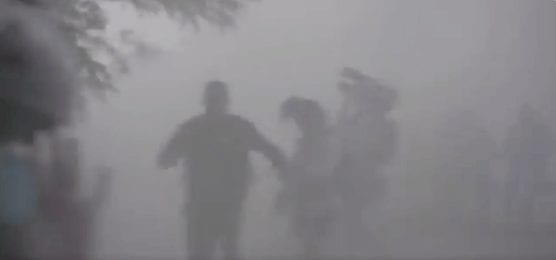
Minneapolis police attack journalists, shooting tear gas and rubber bullets, as well as beating with batons, and corral them into a dead-end on the street. (Source)
As a mass of Minneapolis police in riot gear unload canister after canister against protesters in the street, they find this group of journalists, out of the street and out of their way, and start screaming. Cops descend on the reporters, shooting tear gas, pepper spray and hitting the group with batons, all caught on video.
There are yells of “Press!” and “We’re reporters!” but police continue to beat, gas and assault the journalists. Through clouds of fumes, police keep attacking while reporters attempt to flee. Journalist Ed Ou says that Minneapolis police had forced the group into a dead end, so that journalists had to scale a half-wall with their equipment to escape the blows and fumes. One officer is shown forcibly shoving a reporter over the edge.
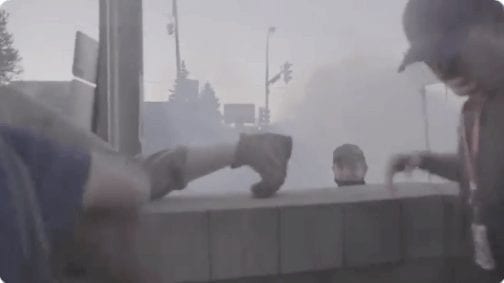
Journalists are forced to climb to safety as police continue to shoot tear gas and rubber bullets at them in Minneapolis, MN on June 2. (Source)
Blood streaming down his face from a rubber bullet shot by police, Ou is heard begging for help, saying “I’m hurt,” but police ignore him and continue walking.
Ou then gets up and walks over to police vehicles where more officers are entering the scene. He asks at least four different cops for help and they all ignore him. Eventually a fellow photojournalist named Peter Van Agtmael finds Ou in bad shape, and gets him out of there to safety. Ou’s facial injuries required four stitches.
Minneapolis Police Brutality Against Journalists
If Minneapolis police act like this when they know they’re on camera, how do they act when they know no one is watching them? If they brutalize and intimidate journalists with abandon, then how do they treat those in the community who have no voice?
I want to acknowledge that it generally is a privileged position to be a journalist. Members of the press can enter just about any community and immediately begin getting the information out. Where journalists go, the story will follow.
However, that same message spoken by disenfranchised people who have lived under state-sanctioned police brutality for decades, if not generations, has typically been met with disbelief, cast aside, or simply silenced with force. In recent years, video has played a massive role in exposing the everyday oppression and racism that Black people in particular face for just existing in the wrong place at the wrong time.
Americans have the right to know what their police forces are doing, especially if they act more like an anonymous quasi-military force instead of helping the communities they’re meant to “protect and serve.” Journalists have been instrumental in getting that message out, but it is because of Black Americans protesting the killing of George Floyd that journalists from around the country even showed up in Minneapolis in the first place.
Since 2012, Minneapolis residents have filed 2,600 complaints of misconduct against the Minneapolis Police Department. Of those 2,600 complaints, 12 have resulted in discipline against an officer. The worst punishment a Minneapolis cop ever received as a result of a complaint? A 40-hour suspension. Then the officer was back on the street.
With a system like this, there is no justice.
No justice, no peace.
Share this story
 |
 |
 |
 |
 |
 |

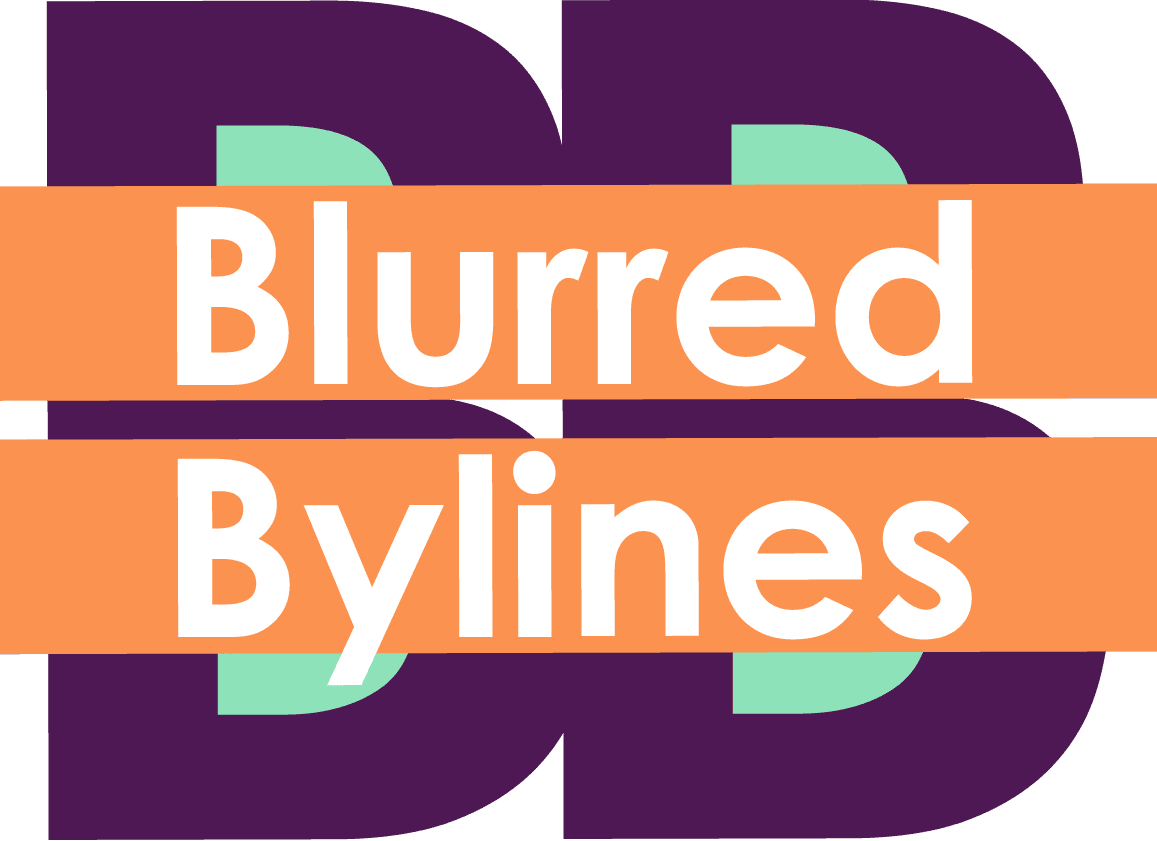



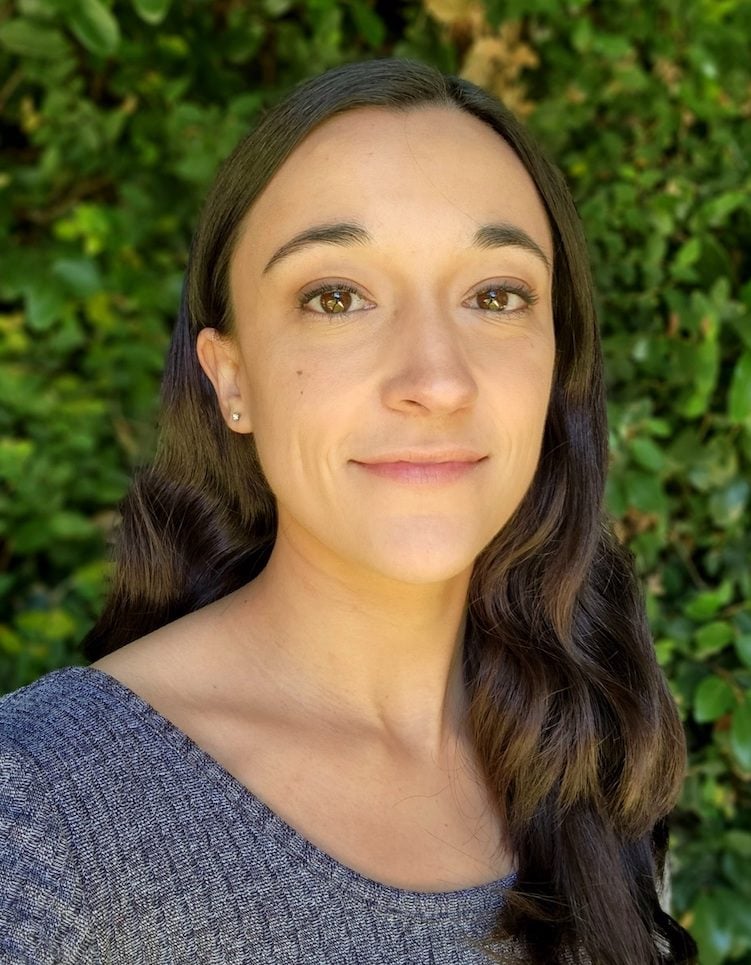
0 Comments